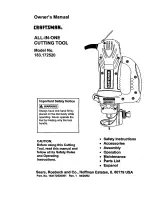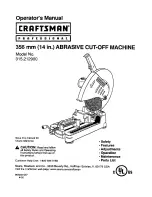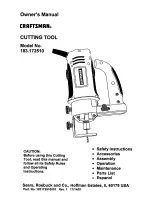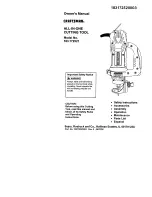
GB
- 17 -
•
Before use, fasten the extension cable in the
stress-relief clip (see Fig. 7).
•
When working outdoors, use extension
cables that are approved for that purpose.
•
Ensure that you have a good footing. Firmly
hold the hedge trimmer with both hands at
a safe distance from your body. Before swit-
ching the hedge trimmer on, make sure that it
is not touching anything.
Working with the hedge trimmer
•
An electric hedge trimmer can be used to cut
shrubs and bushes as well as hedges.
•
The twin-bladed cutters rotate in opposite
directions, thus enabling cutting in both direc-
tions (see Figure 8).
•
It is recommended to tie a guide line of string
along the hedge so that you cut the hedge to
a level height. Cut off all branches which pro-
trude beyond the guide line (see Figure 9).
•
Cut the sides of the hedge using a sweeping
motion from the bottom up (see Figure 10).
•
Be sure to comply with noise protection re-
gulations and local ordinances. Use of the
hedge trimmer may be restricted or prohibited
on certain days (e.g. Sundays and holidays),
at certain times of the day (midday, nighttime)
or in particular areas (e.g. health resorts, cli-
nics, etc.).
•
When you are cutting, ensure that you do not
come into contact with any objects such as
wire fences or plant supports. This may da-
mage the cutter bar.
•
Firmly hold the hedge trimmer in both hands,
with one hand on the rear handle and the
other hand on the front handle. Your fingers
and thumbs should be wrapped around the
handles.
•
If a solid object blocks the cutter, immediately
switch off the hedge trimmer, disconnect the
power plug and remove the object.
•
Always continue moving away from the power
outlet as you work. Decide on the direction of
cut before you start working.
•
Make sure that the extension cable stays out
of the work area. Never route the cable over
the hedge where it could easily by caught by
the cutter blades.
•
Avoid subjecting the hedge trimmer to exces-
sive stress while you are working.
•
Cutting hedges in the shape of a trapezoid is
recommended to prevent the lower branches
from going bare. This corresponds to natural
plant growth and allows your hedge to flou-
rish. If you only cut back the new seasonal
shoots when you are trimming, you will have a
dense hedge which provides good privacy.
7. Replacing the power cable
Danger!
If the power cable for this equipment is damaged,
it must be replaced by the manufacturer or its
after-sales service or similarly trained personnel
to avoid danger.
8. Cleaning, maintenance and
ordering of spare parts
Danger!
Always pull out the mains power plug before star-
ting any cleaning work.
8.1 Cleaning
•
Keep all safety devices, air vents and the
motor housing free of dirt and dust as far as
possible. Wipe the equipment with a clean
cloth or blow it with compressed air at low
pressure.
•
We recommend that you clean the device
immediately each time you have finished
using it.
•
Clean the equipment regularly with a moist
cloth and some soft soap. Do not use
cleaning agents or solvents; these could at-
tack the plastic parts of the equipment. Ensu-
re that no water can seep into the device. The
ingress of water into an electric tool increases
the risk of an electric shock.
8.2 Carbon brushes
In case of excessive sparking, have the carbon
brushes checked only by a quali
fi
ed electrician.
Danger!
The carbon brushes should not be rep
laced by anyone but a quali
fi
ed electrician.
8.3 Maintenance
•
The blades should be cleaned and lubricated
at regular intervals to ensure best perfor-
mance at all times. Remove deposits with a
brush and apply a thin film of oil (see Figure
11).
•
There are no other parts inside the equipment
which require maintenance.
Anl_GC_HH_5047_SPK7.indb 17
Anl_GC_HH_5047_SPK7.indb 17
09.08.2016 08:40:23
09.08.2016 08:40:23
















































